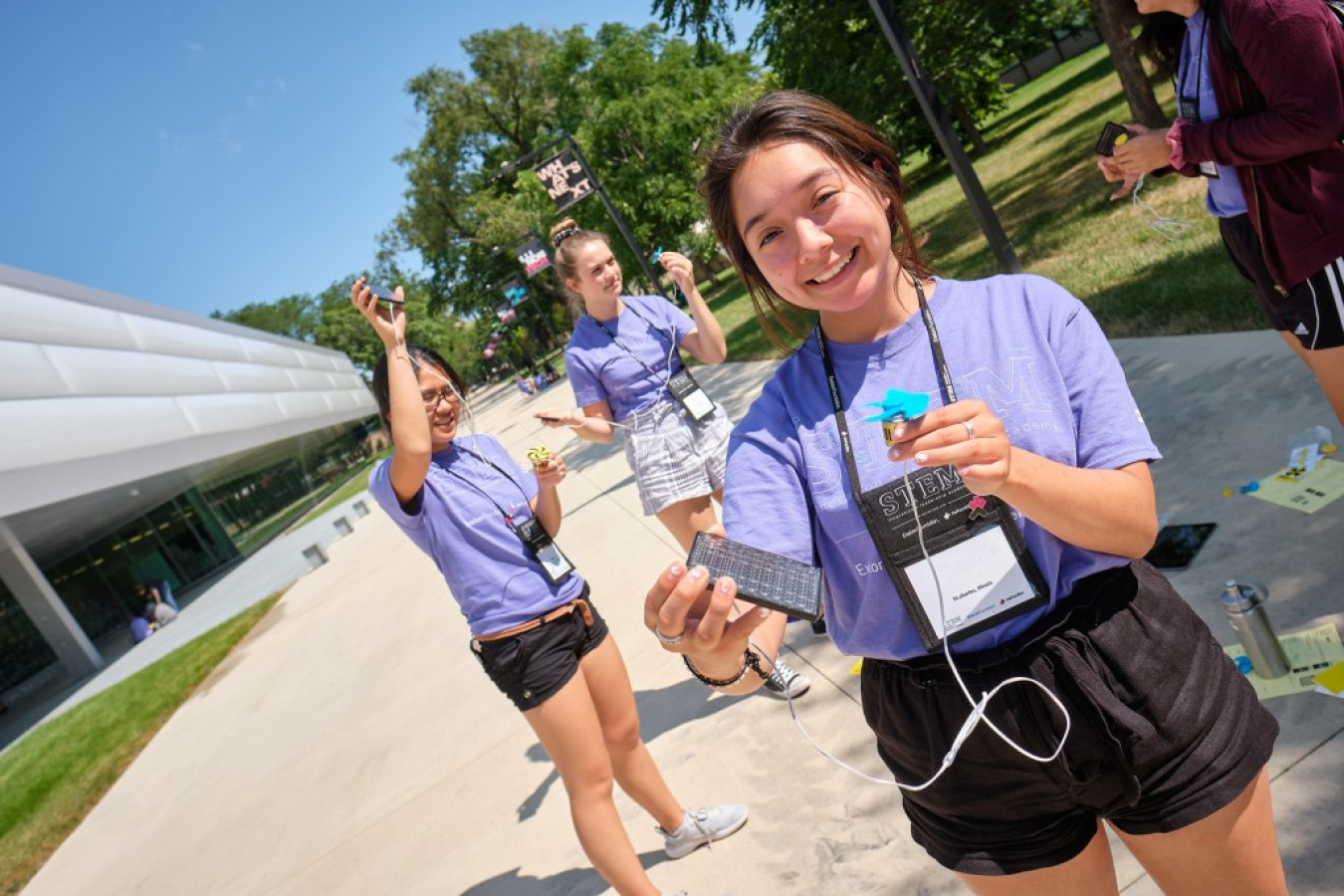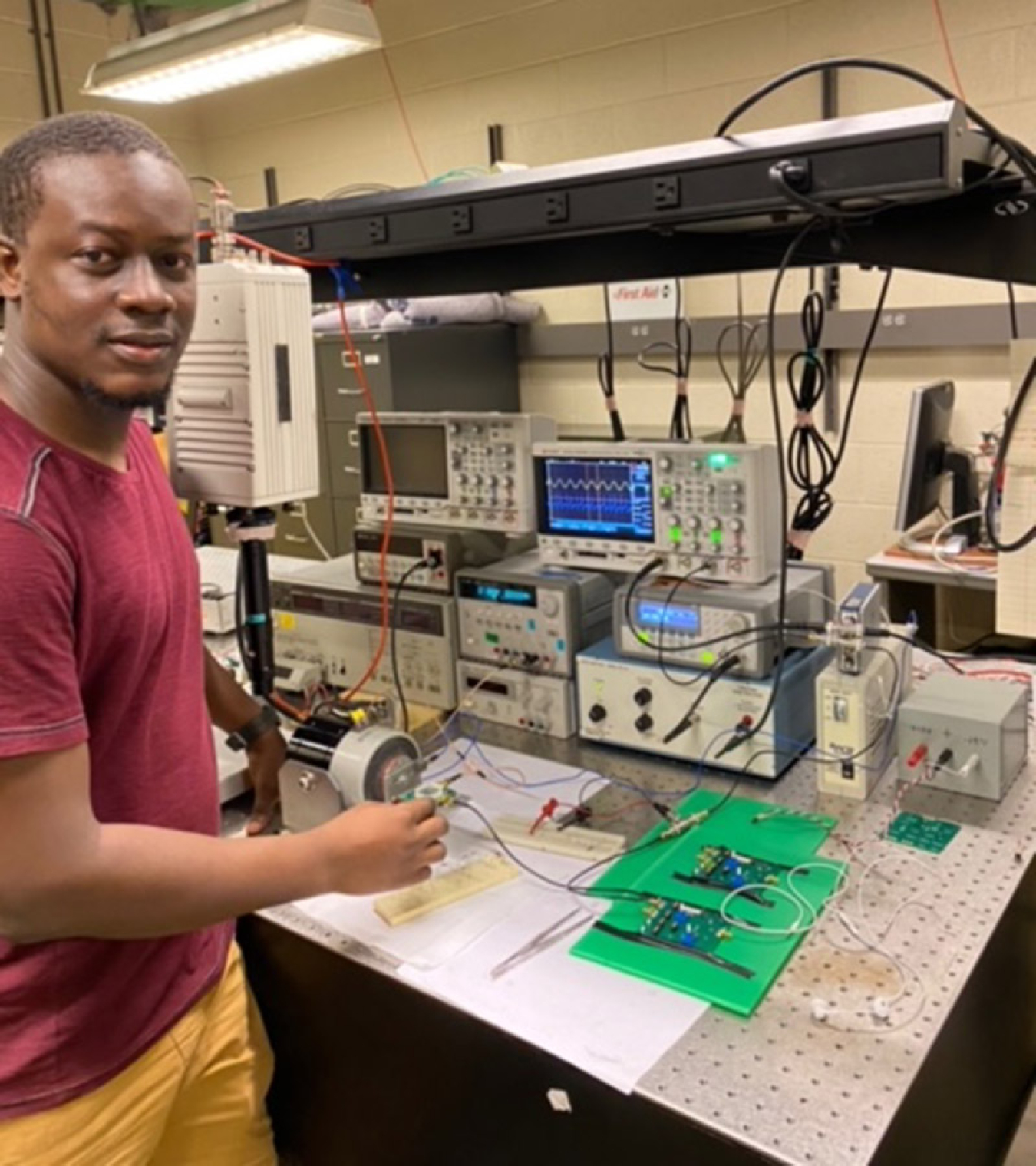This National STEM Day, the Water Power Technologies Office is featuring resources, tools, and opportunities that can help you pursue a clean energy career in water power.
Water Power Technologies Office
November 8, 2022Whatever your background, there are opportunities for you in science, technology, engineering, and mathematics (STEM) fields. This National STEM Day, the U.S. Department of Energy’s (DOE) Water Power Technologies Office (WPTO) is featuring resources, tools, and opportunities that can help you pursue a clean energy career in water power.
Why water power? Both hydropower and marine energy are critical to the United States’ transition to a clean energy economy. Hydropower plants produce renewable energy using the elevation difference created by a dam or structure that diverts water. Water flows in one side and exits at a lower point, spinning a turbine, which runs a generator and produces electricity. Hydropower provides 31.5% of U.S. renewable electricity and 6.3% of its total electricity.
Meanwhile, marine energy technologies transform energy in the natural flow of oceans and rivers—like currents, tides, and waves—into clean electricity. U.S. marine energy resources are equivalent to approximately 57% of all U.S. power generation in 2019. Even if only a small portion of this technical resource potential is captured, marine energy technologies would make significant contributions to U.S. energy needs.
Today, these industries are growing and offer opportunities to pursue new jobs and career paths. Sound interesting? Learn how you can jumpstart your clean energy career and check out WPTO’s STEM resources and opportunities!
For Everyone: Explore the Many Ways Water Can Power the World
Browse STEM Workforce Development Portals

The National Renewable Energy Laboratory collaborated with the National Energy Education Development Project to create a hydropower curriculum that helps primary, elementary, intermediate, and secondary students learn about the water cycle, kinetic energy transformations, and electricity.
In WPTO’s marine energy and hydropower STEM portals, students, educators, and the public can learn about water power technologies, check out careers and training programs, and find resources to use in the classroom or for self-directed learning. Visit the portals to peruse workforce data, animations, games, and lesson plans.
Explore K–12 Resources
The National Energy Education Development (NEED) Project and National Renewable Energy Laboratory created a hydropower curriculum for elementary, intermediate, and secondary students to learn about hydropower, ocean energy technologies, and electricity. Students can build models of turbines, dams, and aqueducts, investigate case studies and hydropower history, and explore hydropower careers.
Visit Renewable Energy Discovery Island
Explore what a water-powered world could look like with the National Renewable Energy Laboratory’s Renewable Energy Discovery (REDi) Island. Check out educational, in-depth videos featuring a run-of-river hydropower system that can generate electricity without the need for a large water reservoir, a marine energy-powered desalination plant that can produce clean drinking water, and more!
Discover Water-Powered Worlds Through Animation
Curious to see water power technologies in action? Enter beautiful animated worlds in videos, like The Power of a River, Clean Water From Ocean Waves, and The Wonder of Wave Gliders, created by Mystic Aquarium and the National Renewable Energy Laboratory. Learn how real communities, like the Alaskan village of Igiugig and the island nation of Cabo Verde, are harnessing water power to create clean energy and drinking water.
For Undergraduate and Graduate Students: Join a Collegiate Competition
WPTO’s Marine Energy Collegiate Competition (MECC) and new Hydropower Collegiate Competition (HCC) aim to inspire and help build the future workforce to lead these industries. These competitions provide undergraduate and graduate students with hands-on experience and industry connections to help them start their careers.
The U.S. hydropower industry faces an oncoming wave of retirements, and a new, diverse workforce is critical to the industry’s ability to sustain current operations and grow, according to the new report U.S. Hydropower Workforce: Challenges and Opportunities. That’s among the reasons WPTO launched the HCC earlier this year. The competition provides a platform for students to develop unique solutions to complex challenges related to hydropower’s ability to enable a 100% renewable energy grid. Learn more about this year's teams!
The fourth annual MECC is also underway. This competition challenges competitors to offer unique solutions to the burgeoning marine energy industry that can play a vital role in powering the blue economy. MECC alumni have gone on to secure fellowships or jobs in the marine energy industry. Learn about the current teams and the winners of the third annual MECC, which were announced in June.
For Graduate Students and Postdoctoral Scholars: Advance Your Research Through the Marine Energy Graduate Student Research Program

Habilou Ouro-Koura is one of three fellows selected as part of the 2022 Marine Energy Graduate Student Research Program.
The Marine Energy Graduate Student Research Program is open to full-time graduate (master’s and doctoral) students with a marine energy-focused research thesis and/or dissertation at a U.S. institution. The program provides students with access to the expertise, resources, and capabilities available at DOE offices, national laboratories, industry, and other approved facilities where they will conduct part of their research.
For example, Habilou Ouro-Koura, a 2022 fellow, is working with the Pacific Northwest National Laboratory to help make ocean thermal energy technologies more efficient and cost-effective, so they can power offshore, uncrewed vehicles. Claire Gonzales is spending her fellowship with the Bureau of Ocean Energy Management, exploring ways to pair marine energy with offshore fisheries to help conserve ocean spaces, feed the planet, and reduce carbon emissions. Finally, Christopher Ruhl is working with Sandia National Laboratories to characterize turbulence at tidal energy sites around the world. (Watch the WPTO website for more about his story next week!)
Water power is one of the dependable renewable energy resources needed to build a clean energy future. So, if your passion is fighting climate change and helping protect the planet, chase your curiosity and supercharge your career with help from WPTO.
Stay up to date with the latest WPTO funding opportunities, events, and other news by subscribing to the monthly Hydro Headlines and Water Column newsletters, as well as the comprehensive, bimonthly Water Wire newsletter.

